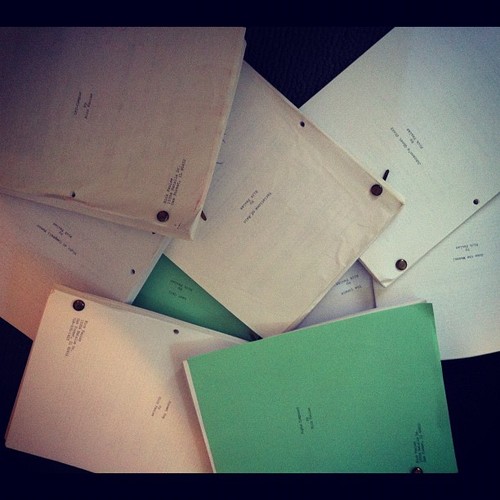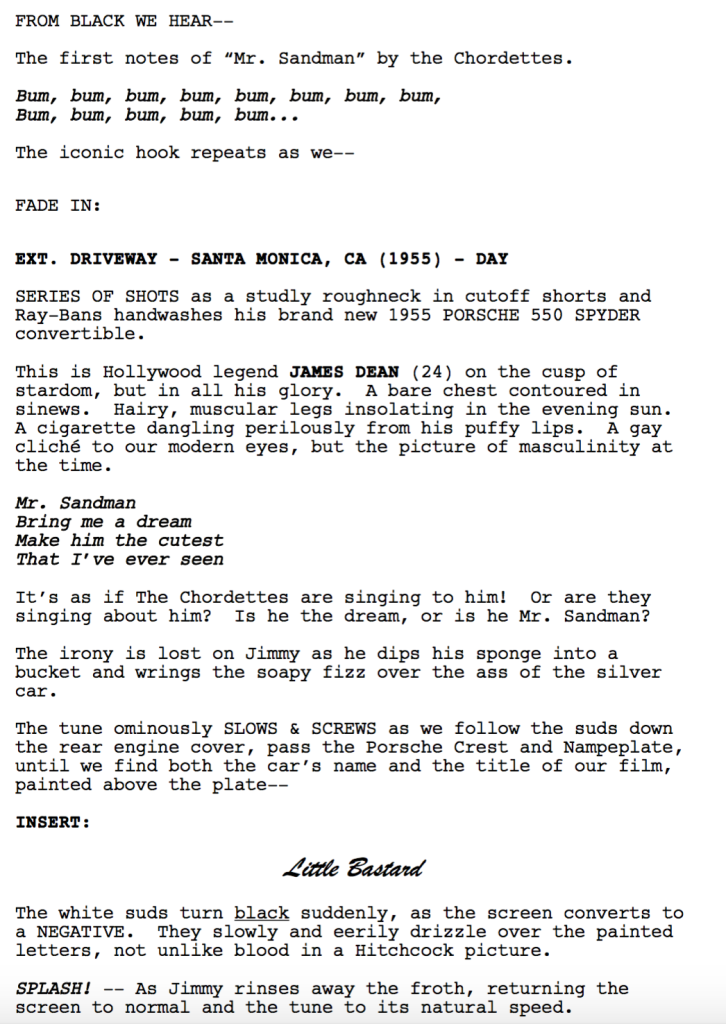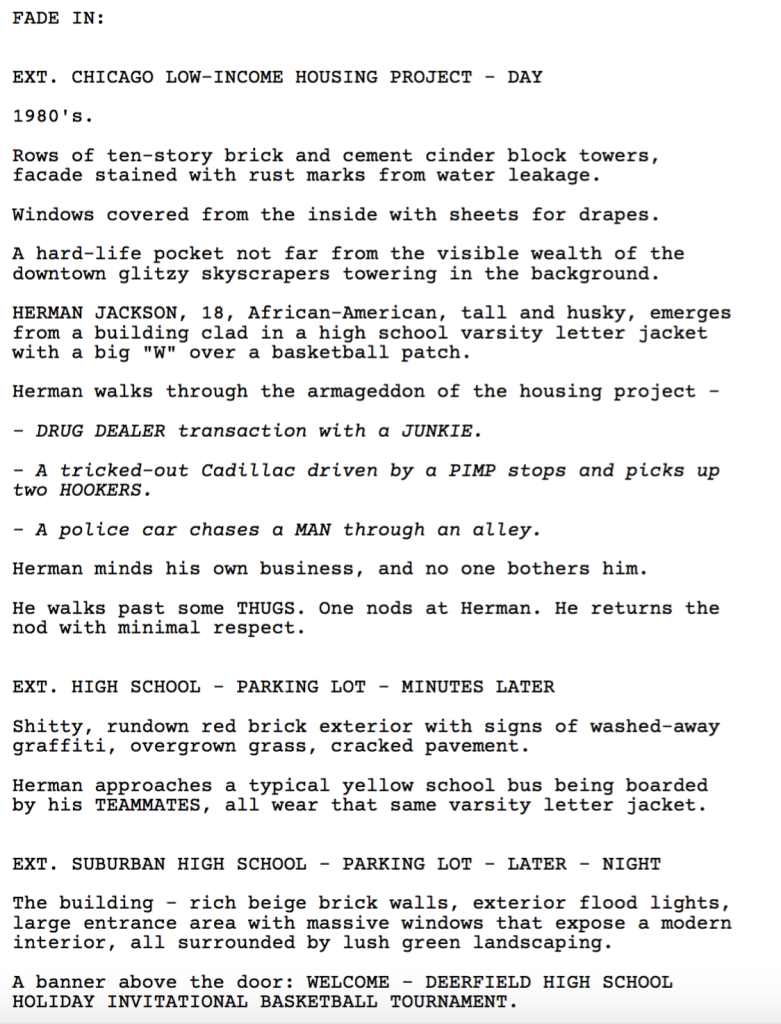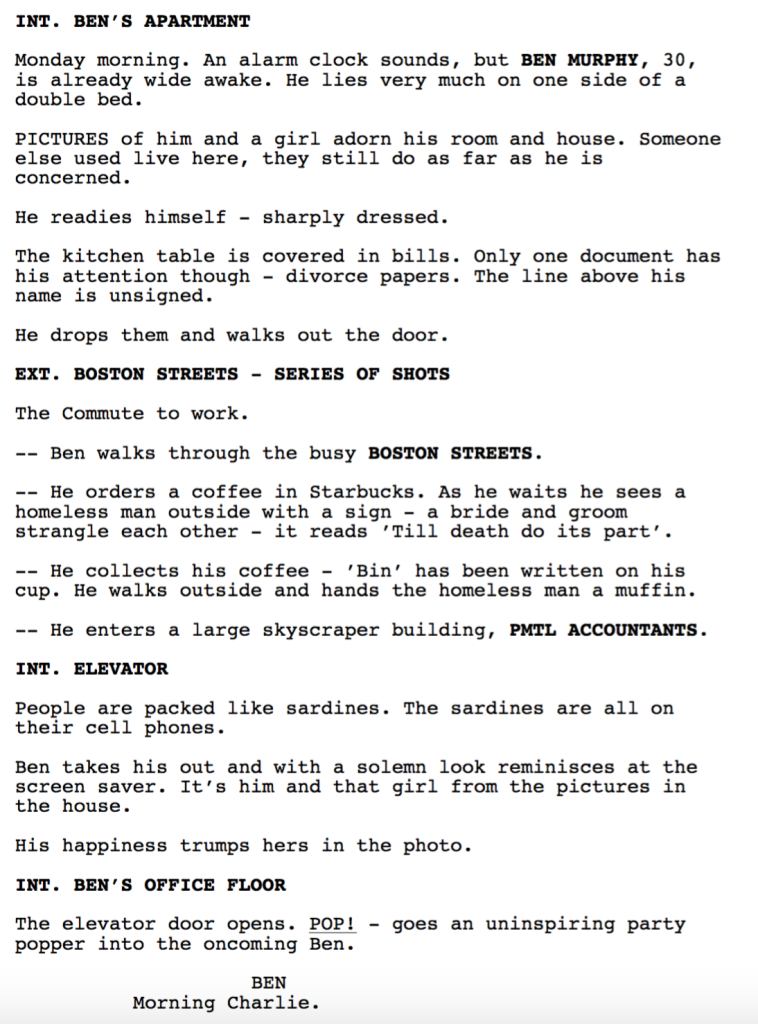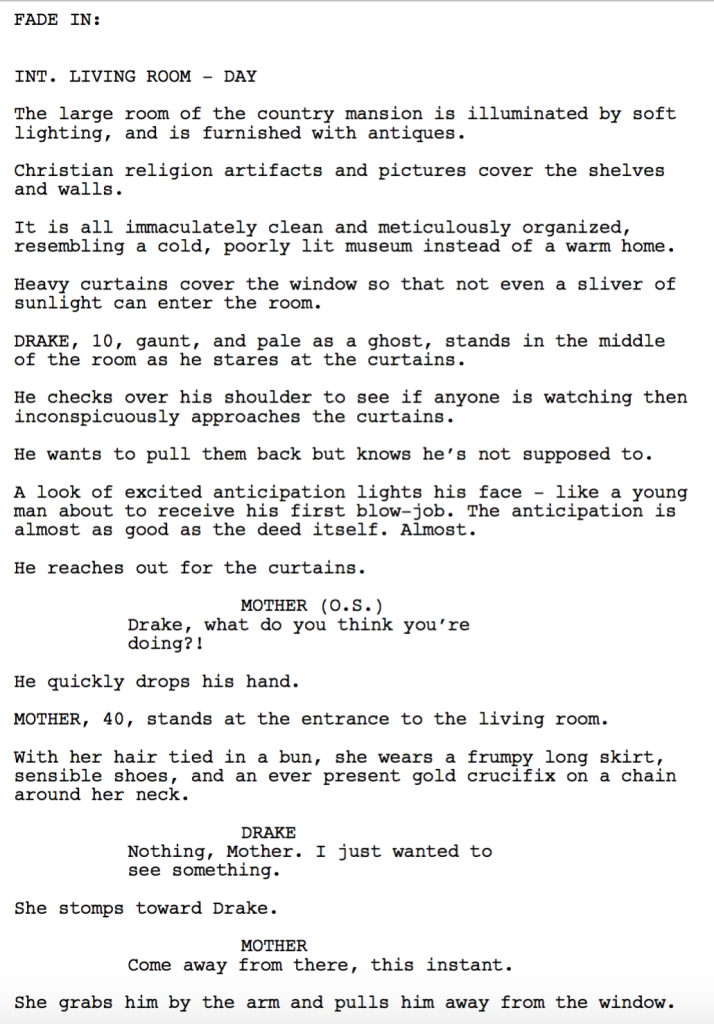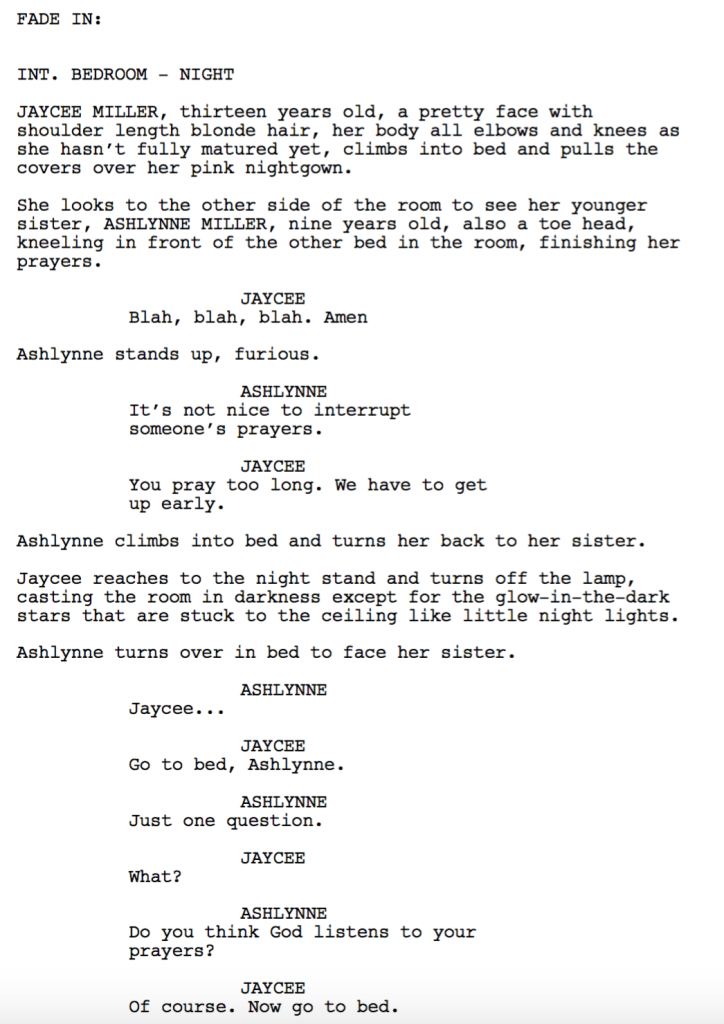
There was a fun little debate going on in the comments section of this Monday’s book review, Killers of the Flower Moon. It came up when I pointed out that the biggest problem with the book was that the main character, Tom White, was so vanilla, so uninteresting, that I had a hard time understanding how they were going to make him work. A few of you chimed in by saying, “Actually Carson, that’s how movies are. The main character is usually the grounded everyman, while it’s the surrounding characters who are the flashy interesting ones.”
As the evidence was laid out before me, I found that my entire understanding of a main character was shattered. Luke Skywalker certainly fit this bill. As did Clarice Starling in Silence of the Lambs. Andy Dufresne in The Shawshank Redemption DEFINITELY fit this mould. And let’s not forgot Neo. These were some of my favorite movies ever. And all the characters were, if not “uninteresting,” certainly not stand-out crazy memorable types. What the hell was going on?? Was it true that in order to write a good movie, your main character had to be, gasp, plain?
So then I started going back through some of the best movies of the last 3 decades to see if this applied across the board. What I quickly found out was that this theory didn’t hold up… at all. Tony Stark. Peter Parker. Ferris Bueller. Louis Bloom (Nightcrawler). Deadpool. Jason Bourne. Forrest Gump. Jordan Belfort. Pat (Silver Linings Playbook). John McClane. Indiana Jones. Juno. William Wallace. Leonard (Memento). When in doubt, go to the data. And the data clearly shows that there are more movies out there where the main character is big, memorable, and interesting than small, ordinary, and plain.

With that said, there are clearly movies where an ordinary main character works. Luke, Neo, Agent Starling, Andy Dufresne. So what’s going on there? A few things, I think. The first is to figure out what your story calls for, an ordinary hero or an extraordinary one? In movies like Star Wars and The Matrix, the entire make-up of the story is built around an ordinary person being thrown on an adventure where they learn to become “extraordinary.” It’s the classic “Hero’s Journey.” For those movies, an extraordinary hero wouldn’t make sense because then there’d be no need to go on the adventure.
Also, each of the worlds those characters existed in were interesting. The world of Star Wars, the world of the Matrix, the world of sordid serial killers, the world of this prison. You could throw Michael Corleone in there from the Godfather – that universe was fascinating as well. These movies could withstand an “ordinary” hero because the worlds themselves were so big and vibrant, characters in themselves. If you tried to place an ordinary character into, say, Die Hard, which takes place in a building, it doesn’t work. The smaller the world, the bigger the character has to be, since he’s going to be carrying more of the load.
So what does this mean for you who’s starting up that next screenplay? Should you go with a more reserved “everyman” or do you try and make your hero flashy and memorable? Unless you’re writing a story that fits squarely into the Hero’s Journey structure, you should try and make your main character stand out IN SOME CAPACITY. How crazy you want to make your character will depend on what you’re going for.
One of the easiest ways to answer this question is to ask if this is a character based movie or a plot based movie. Star Wars is plot based. Nightcrawler is character based. The plot is almost incidental. Therefore, in a movie like Nightcrawler, you’ll want to go big with the character. Do something interesting with him. What that is is up to you (they went with psychopathic whereas a movie like Flight went with addict) but a movie like Nightcrawler won’t work with an ordinary character.

Now, let’s say you decide that your movie is plot-centric. Does that mean you have to go with a reserved main character? No. What it means is that you HAVE THE OPTION to go with a reserved main character. There’s evidence, based on past movies, that it can work. But that doesn’t mean you can’t go big with your main character. And I would suggest that, if you have a choice between one or the other, you make your main character interesting as opposed to not.
Could Iron Man have worked if Tony Stark was a quiet average guy? Maybe. We’ll never know. But I know this – as a fast-talking narcissist, he sure was an interesting character to follow. Could Indiana Jones have worked if Indy was more mild-mannered, didn’t have a sense of humor, sex appeal, or was bit of a dick? Maybe. But it was those added traits that turned him into one of the most memorable characters of all time.
With that said, we can’t discount the evidence that there have been HUGE movies over time with vanilla main characters. So if you write one of those movies yourself, how do you avoid making the main character too boring? How do we make someone work despite the fact that they don’t naturally stand out?
All we need to do is look at the data to find our answer. In the case of Andy Dufresne, Luke Skywalker, and Clarice Starling, there’s one common trait in all of them. Do you know what it is? THEY. DON’T. GIVE. UP. In fact, they’re quite the opposite. They are constantly charging forward despite the odds. Audiences LOVE characters who never stop fighting no matter how bad it gets (mostly because we, as human beings, wish we were that way ourselves). So that’s a big factor. Even though Clarice, Luke, and Andy are kind of “meh” on the outside. We like that their internal guide is always trying. If Andy Dufresne would’ve walked into Shawshank and moped around for 120 pages, that’s the worst movie of all time.
One of the more obvious things is to give the character an internal struggle. It can be in regards to a flaw, an addiction, their past, mourning, anything – as long as they have something to battle with. But this advice comes with a warning label. If it isn’t truthful, IT WILL DO MORE HARM THAN GOOD. If whatever you add only works to tick some screenwriting book box, it won’t work. It needs to feel honest, like something a person in real life would be going through. For Luke, it’s that he has doubts. He wants to be great but he has doubts he can be. And that’s a very honest relatable struggle since we all doubt ourselves. With Agent Starling, the whole saving the lambs backstory —- ehhhh, let’s just say it wasn’t the best part of the film. It felt a bit manufactured. When applying a conflict to these types of characters, better to be understated than over the top.
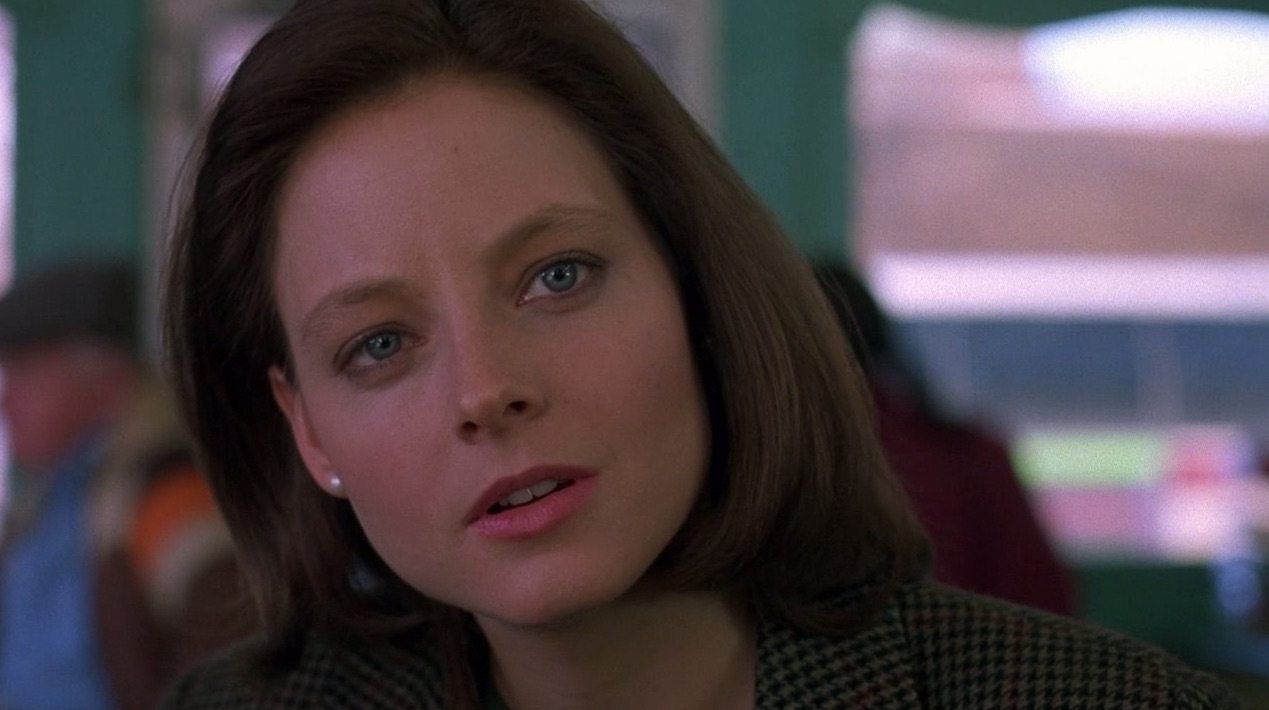
But for me, the secret sauce in adding spice to a character yet still keeping him grounded is a sense of humor. The great thing about a sense of humor is that it’s one of the easiest ways to connect the audience to a fictional being. If someone says something you think is funny, you immediately like them. The greatest example of this is Rocky Balboa. On the surface, Rocky is the prototypical “everyman.” But the reason Rocky is seen by many as the best everyman of all time is that he’s got personality and he’s got a sense of humor. He’s not afraid to make dumb jokes to get a girl. He’s not afraid to give advice to random kids who flip him off. He’s not afraid to talk to pet turtles. If Rocky was a classic personality-less everyman, he would’ve gotten swallowed up by the burning star that was Apollo Creed. But it was his understated sense of humor that made him stand out.
When it’s all said and done, the type of movie you’re writing will inform you what kind of person your hero should be. But it’s my contention that you’re better off trying to make your hero interesting REGARDLESS of the circumstances, than going with the safer, and only occasionally successful, vanilla everyman.
Carson does feature screenplay consultations, TV Pilot Consultations, and logline consultations. Logline consultations go for $25 a piece or 5 for $75. You get a 1-10 rating, a 200-word evaluation, and a rewrite of the logline. I highly recommend not writing a script unless it gets a 7 or above. All logline consultations come with an 8 hour turnaround. If you’re interested in any sort of consultation package, e-mail Carsonreeves1@gmail.com with the subject line: CONSULTATION. Don’t start writing a script or sending a script out blind. Let Scriptshadow help you get it in shape first!
Genre: Historical/Biopic
Premise: When a young French farm girl watches her family get slaughtered by the English, she vows revenge on the murderer, and leads an army against him and his country.
About: After the success of Braveheart, everyone in Hollywood was trying to get a Joan of Arc movie made. Katheryn Bigelow, who’d been trying to make a Joan of Arc movie for years, was collaborating with Luc Besson on a project, only for Besson to pull out when he was told his then wife, Milla Jovovich, couldn’t play the lead. Besson then set up his own separate Joan of Arc project, for which Bigelow sued him for stealing her research. She should’ve sued him for making one of the worst movies of the decade. In Nomine Dei was a separate project bought by Joel Silver by Laeta Kalogridis, who most recently created the upcoming Netflix series, Altered Carbon, as well as wrote one of the upcoming Avatar sequels.
Writer: Laeta Kalogridis
Details: 130 pages (undated – likely somewhere between 1995-1997)

Uh, Hollywood? Hashtag, Ya slackin.
You’d think that with the tsunami of female dominated films taking over town, that someone, somewhere, would’ve thought to reintroduce the original female superhero: Joan of Freaking Arc. When you consider we haven’t had a good swords-and-sandals epic in ages AND that Joan of Arc’s IP is free for anyone to use, I’d go so far as to say Hollywood producers should start getting fired for not thinking of this.
I’m going to make a bold statement. Within two weeks of this review, one of the major studios will announce a Joan of Arc film. After every single producer in Hollywood bops themselves on the head for overlooking such an obvious green light, the race will be on to put a package together. Will it be with this script? Good question. Despite the screenplay being over 20 years old, Kalogridis is an A-lister. So let’s find out it the script is any good.
Our movie starts in 1443, with prisoner Giles de Rais, who fought with Joan of Arc, scheduled to be burned at the stake tomorrow. When a young priest visits him the night before to persuade him to admit fault for aligning with “the devil’s wife,” de Rais forces the priest to hear Joan of Arc’s story.
Jump back 14 years to Domremy, a small village in the French countryside. Joan and her family live a pleasant life, despite the fact that a war has been going on between England and France for a hundred years. The English army would never bother venturing out to random towns in the countryside, though. It’s too much hassle.
Except that’s exactly what happens. The evil general, Raverford, slaughters Joan’s family in front of her, then leaves her for dead. Joan isn’t dead, however. After waking up in a pile of discarded bodies, she travels with other refugees to Valcoleurs, and demands the local mayor give her an army so she can attack England.
He thinks she’s crazy, of course, but Joan finds a believer in 17 year old Jean de Metz. After Joan has a dream that Valcoleurs is attacked, and then the next day it is, de Metz starts telling everyone that Joan is a messenger of God, that he himself told her of the impending attack. Joan denies this at first. But as the legend of her premonitions grows, she embraces it so she can enact revenge.
Around this time, Joan meets de Rais (the dude from the opening) and he helps her raise an army to attack the English. Off they go to Orleans, where they gain soldiers along the way who have heard of Joan, and they win a major battle. When the King of France learns that he can use this Joan chick to improve his image, he puts the might of the French army behind her. But when push comes to shove, he grows scared of giving so much power to a woman, and deceives Joan when she needs him most.
It’s funny. When I first began writing my analysis of this script, I highlighted the fact that it was easy to follow. Hard-to-follow screenplays are a MAJOR mistake writers make when writing historical epics. They zoom out too much, try and cover too many things, and the story becomes messy and unfocused, leaving the reader to wonder what the damn thing is about.
However, when I moved on to my criticisms, my big one was that the story was too simple. There was no scope here. It amounted to a woman trying to get revenge. I don’t know a whole lot about Joan of Arc. But I thought she fought in these huge battles. Going off this screenplay, she was involved in a couple of battles, the biggest of which had around 1000 people involved. It was anticlimactic to say the least.
The thing about Braveheart (a clear influence here) was that it covered so many characters, so many sides, so much time, it truly felt epic. And that would be my main knock on In Nomine Dei. You have to give the audience what they expect. If they sit down expecting a five-course meal, don’t hand them a bowl of soup.
Speaking of Braveheart, this might be a good time to debate a common practice all screenwriters face. When you’re writing a script, should you watch the successful movies in that genre? Common sense says yes. You want to study why something worked in the hopes of applying that formula to your own script. The problem with this practice is that you risk these movies having too much influence.
It became blatantly clear to me after reading In Nomine Dei that Kalogridis rotated two movies over and over again in her DVD player – The Princess Bride and Braveheart. She frames the story via a “Let me tell you a story” device, just like Princess Bride. And the relationship between Joan and Raverford is so similar to Inigo Montoya and the six-fingered man that it bordered on silly. The whole “Get revenge for killing my family” storyline was also, obviously, influenced by the “Get revenge for killing my wife” storyline in Braveheart.
Look, I get it. You want to know the recipe for success. But if you watch similar successful movies for inspiration, do so with caution. Pay particular attention that you’re not copying their beats. Cause some will slip in there subconsciously regardless. One of my main pieces of advice to writers is to not repeat what someone else has done. But to create something original that others will want to repeat.
But the script’s biggest sin is easily its vanilla characters. Raverford was the most one-dimensional villain ever. By that I mean, he was only terrible because the writer needed him to be. He had no motivation whatsoever besides “Be awful.” A character who’s in 70% of the scenes, Jean de Metz, has so little depth that had the writer stopped including him in the second half of the script with no explanation as to where he went, I wouldn’t have noticed. Giles de Rais is kind of interesting. But that’s only because we know him outside the context of the main narrative. When he’s around Joan, he becomes so docile and plain, it’s like he’s not a person anymore. It’s bizarre. Even Joan of Arc was kind of lame. She seems like she would be one of the easiest characters to make interesting, and yet she’s relegated to this one-track mission of revenge and having the occasional lame dream.
I believe there’s a great Joan of Arc movie out there. But it needs a writer committed to creating a rich narrative and some really memorable characters (not just lean on Joan to carry everything). So who’s going to write that movie? And how would you frame a Joan of Arc narrative?
[ ] What the hell did I just read?
[x] wasn’t for me
[ ] worth the read
[ ] impressive
[ ] genius
What I learned: If I learned anything from this script it’s to make sure your supporting characters have their own lives, their own fears, problems, personalities, interests, conflicts, etc. We can get lost in our main character and believe, when they’re onscreen, that they’re all that matters. But if the characters around them are weak and boring, the scenes themselves will be weak and boring. And that was this whole script. No interesting supporting characters and a lot of lifeless scenes.
By the way: Who would you cast as Joan of Arc?
Genre: Drama
Premise: (from Black List) Behind the walls of a maximum security prison, a naive teenage inmate and a rookie correctional officer are forced into a drug- smuggling operation, while a looming conflict between rival gang members threatens to boil over.
About: Today’s script finished number 8 on the 2017 Black List. The Danish writer, Federick Skov, made a documentary about boxing before this, but this is his breakthrough script. Shout out to all of you non U.S. natives who think you can’t break into Hollywood!
Writer: Frederik With-Seidelin Skov
Details: 117 pages

I’m going to throw a new term at you today. “Subject matter bias.” Everyone’s guilty of it. We’re drawn to certain topics and subjects. We’re resistant to others. It’s why when someone loves a movie (say, a YA novel adaptation) but hates another (a superhero film) despite them being virtually identical in all other areas, subject matter bias will usually be the reason.
I don’t like prison movies. I just don’t. I think they’re obvious. I think they rarely do anything unique. So I have fairly high subject matter bias against them. HOWEVER, it should be noted that just like any other perceived weakness in a script, subject matter bias can be overcome. One of my favorite movies ever is a prison movie (Shawshank Redemption). It can be argued that the greatest achievement for a screenwriter is to make someone who usually hates a movie like yours, love it. Let’s see if that’s the case with Sleep Well.
Elias Hernandez is 17 years old when he’s sent to maximum security prison. Poor Elias hit and killed a young girl, then hopped out of the car and fled the scene. Elias arrives at the prison on the same day as Victor Carrier, a 23 year-old aspiring lawyer who’s celebrating his first day as a correctional officer. Whereas Elias’ arrow is pointing down, Victor’s is pointing sky high.
Elias is hit almost immediately with the realities of his new life. As a half-white, half-Latino man, he can’t even find a proper gang to affiliate with for protection. Lucky for Elias, he becomes friends with his cell mate, “Spring,” a worldly dude in his 50s who has the respect of everyone in the prison, even the officers.
But Spring can’t protect Elias from everything, and soon prison yard bullies are poking him for money, threatening to do terrible things to his mother if he doesn’t pay up. Elias has no choice but to start working for one of the big dogs in the prison, Spectro, who uses Elias to distribute drugs to the other prisoners.
Ironically, Victor is faced with the same predicament. Even though he’s supposed to be the good guy, his boss tells him he needs to join the same distribution chain, collecting the drugs (smuggled inside phones) as they come in from the outside.
The story follows each of the characters separately as they fall further and further into the corruption. But when Elias is told he has to kill a man that he’s friendly with, that’s when shit gets very real. Meanwhile, Victor has had enough, and must decide whether he’s going to snitch on the entire prison staff. Both he and Elias will need to decide soon since time is running out.
One of my prerequisites for a movie like this is: Be an expert in the subject matter. If I know more than the writer does about the subject matter he’s writing about, he’s failed. I’m happy to report that Skov knows the prison world. I wouldn’t be surprised if he’s spent some time in prison. We learn about stuff like ‘lockdown pay’ and that ‘Ad-Seg’ yard is a different yard from the general population yard. This guys knows his shit.
However, that’s the given stuff. A good script needs to have four other things going for it. One, a fresh way into the idea. Two, an original execution. Three, a good plot. Four, good characters. Let’s take a look at how Sleep Well rates in each of these categories.
FRESH WAY INTO THE IDEA
Sleep Well’s “strange attractor” is that it’s following two characters on each side of the prison system, a prisoner and a guard. That’s better than had they only followed the prisoner. But is it fresh enough? Maybe my subject matter bias is creeping in here, but I need more to move the needle.
ORIGINAL EXECUTION
This is where Sleep Well really suffered. We have a prison movie… about smuggling drugs into prison? We have a major plot beat revolving around… needing to shiv someone? Aren’t both of these things in every prison movie ever? For us subject matter bias readers to be turned, we need something different. Neither of these things were.
A GOOD PLOT
I spent too long trying to figure out what the plot was here. I wanted that big plot point to emerge, but instead was served a lot of tapas sized plot points, such as needing to pay off bullies, and learning to smuggle drugs in. A good plot has an end point in sight and I was never given that. In fact, the drug smuggling stuff was so understated, I assumed it was just one of what would eventually be other, bigger plot points. It wasn’t until the final 30 pages, when the drug smuggling plan started to unravel that I thought, “Okay, I finally know where the story is headed.”
GOOD CHARACTERS
The characters here were pretty good. Elias was easy to root for (a 17 year old kid in a man’s prison – perfect underdog scenario). Spring stuck out as well. But there weren’t any scene-stealers. I suppose some of that can be solved with casting, but I’m a huge proponent of solving as much as you can on the page.
My honest opinion of Sleep Well is that if you have a familiar generic setting – like a prison, or a hospital, or a police precinct – and your script is built mostly around characters as opposed to plot? You should be writing a TV show. Unless Skov is also the director of this movie (which he might be, I don’t know), they don’t make these movies based off specs anymore. A movie needs a flashier and/or bigger plot, it needs higher stakes, it needs more of an ‘event-like’ feel.
For example, if this was about a young prisoner on his first day who gets wrapped up in a touchy prison turf-war where both sides want to kill him and he needs to survive the day before he’s transferred to another prison tomorrow, then you have yourself a movie. But if you’re going to draw the timeline out and meet and focus on the subtleties of the characters and their relationships, why not turn it into a TV show? Not only is that easier to sell these days but it’s going to make you a hell of a lot more money.
I’d be curious to see what prison-movie geeks think of Sleep Well, those of you who have subject matter bias FOR this subject matter. I’m always trying to figure out why people like things that don’t have that flashy component that sticks out and sets the project apart (people who liked Spotlight, for example, which I thought was insanely boring). Let me know what you think in the comments.
[ ] What the hell did I just read?
[x] wasn’t for me
[ ] worth the read
[ ] impressive
[ ] genius
What I learned: If you’re someone who cares more about character than plot, you should be writing television. Movies are not the best place for character development. I would even argue that features actively work against the creation of compelling characters. I mean who develops a fully-rounded captivating character in two hours? It’s really hard. Whereas when you have the 50-100 hours of story time in a TV show, it’s easy.
Today I review the flashiest book sale of last year, which should make for one of the best movies of next year.
Genre: Drama/Mystery
Premise: In one of the United States’ most shocking untold stories, Killers of the Flower Moon covers the systematic murders of the Osage Indians, who were once the richest people, per capita, in the world.
About: This is a biiiiiiiiig one, guys – one of the hottest deals of last year. Before this book was released, everyone was bidding, and the movie rights ended up going for 5 million bucks to Imperative Entertainment, with an All-Star package that included Leonardo DiCaprio, Robert De Niro, and Martin Scorsese. To add even more prestige to the package, superstar screenwriter, Eric Roth (Forrest Gump, Benjamin Button), will be adapting. Author David Grann is best known for his last book, “The Lost City of Z.”
Author: David Grann

Most people know Leonardo DiCaprio for his acting. But the reason the actor has been able to keep his star afloat during the decline of the star-driven film is his other talent, his ability to spot great material. Remember, DiCaprio was indirectly linked to the birth of the Black List, as Franklin Leonard was working for his company at the time. So whenever he signs on to something, chances are it’s going to be good. And this one may be his greatest discovery yet.
I mean, you read this story and you think, “How could this not have been told already?” You have a tribe of American Indians who were the richest people in the world. You have a person, or a group of people (we’ll get to that), systematically murdering them. And if that doesn’t solidify your teepee, you have a young J. Edgar Hoover using the case as a test bed for a new idea: a forensics-based super-agency that would go on to become the Federal Bureau of Investigations.
There’s so much to cover in this story, I don’t even know how to summarize it. But here are the key beats…
The story takes place in the early 1920s in Oklahoma. The is where the Osage people live, a tribe of American Indians who, after being torn from their land and forced by the government to settle inside a few thousand acres, ironically ended up in one of the most oil rich areas in the nation. As one oil deposit after another was discovered, the Osage quickly became some of the richest people in the world.
We focus on a young Osage woman, Mollie Burkhart, whose sister, Anna, is found murdered, shot in the back of the head. This was a devastating blow, as Mollie had lost another sister just three years earlier. And to make matters worse, her mother was becoming ill. Mollie began to complain to her husband, a white man named Ernest Burkhart (the Osage womens’ extreme wealth often brought them a bevy a white male suitors), that she believed the Osage were slowly being killed.
Mollie was right. Over the past few years, 20 Osage people had died, either murdered or due to mysterious circumstances, the most common of which was a months-long unidentified sickness before dying. Here was the problem with the Osage murders, though. The United States didn’t have the infrastructure to deal with such a problem. In many ways, even in the 1920s, states like Oklahoma were the Wild West, and as the great Drago once said, “If you die… you die.” Wasn’t nobody there to figure out why.
Enter a young J. Edgar Hoover (a spitting image at the time of Mr. Robot actor Rami Malek), who was heading up the predecessor to the FBI, the way more underfunded Bureau of Investigations (future TV show anyone??). The Osage Murders had started to make the papers back East and Hoover wanted to make a name for himself with progressive ideas about how murder needed to be solved (this was at a time where even fingerprints were a new tool in forensics). If he could solve these murders, maybe he would become the big shot he aimed to be.

Hoover hired Tom White, an old-school uncompromising lawmen who used to be a Texas Ranger. White would set up shop in Gray Horse (where all of this was going down), and hire five undercover agents, who moved into the area, one by one, pretending to be regular people, to become friendly with the town and try to dig up information about what was going on.
It takes White awhile, but all signs point towards William K. Hale, whose standing in the community was second to none. Hale, in his estimation, was killing off Osages so that he would be willed the headright to their most valuable pieces of land. White realized Hale had meticulously built up the persona of a “town angel” specifically so that he could act without impunity. And as White began to tighten the reins on Hale, he would learn that Hale had friends not just here in Gray Horse, but everywhere, even back in Washington.
The story becomes about White trying to take Hale down, but the most fascinating thing about The Osage Murders is that even after that story is over, the author discovers, 100 years later, that the Osage Murders were way more expansive than anyone could’ve known. And that maybe, just maybe, they made their way all the way up to the top of the American government.

The amount of shocking details in this story is overwhelming. It’s impossible to cover them all in one review. One of the things I couldn’t get over was the fact that, after all these Osages became rich, with millions upon millions of dollars in their bank accounts, the United States’ government deemed them incapable of managing their own money and assigned them trustees that they had to answer to. So if an Osage man or woman needed 50 bucks to buy food, they needed to go to their trustee and make a case for the money before they could receive it. Even though they were rich, they were poor.
But let’s talk about why this is good material for a movie. For starters, irony. Correct or not, when someone says “Native American,” you think of the old school Indians who rode horses bareback, savages, or just humble spiritual communities of people who live off the land. What you don’t think is: Richest people in the world. So right away, you have a story that’s unlike any other, and that creates intrigue. It’s that “strange attractor” we’re all looking for when we search for an idea.
You also have a clear and compelling story. As old as the murder investigation trope is, it’s still one of the best ways to frame a story. The trick is to find a murder that’s really good – unique, compelling, has layers and levels beyond the obvious. The Osage Murders checks all those boxes. You’ve got greed, deception, secrets, and multiple murders across many years that are each unique and which don’t follow a particular pattern. For example, one murder has someone getting shot in the head, another poisoned, another ran off the road, and another still, their house blown up by a bomb. WTF??
You’ve also got a great villain in Hale. I contend that the best villains are the ones who proclaim to be saints. They ingratiate themselves to the community. They help out the less fortunate. They make friends with the common man. They smile and joke with you. But in the shadows, they’re doing the worst of the worst. That’s Hale. This guy is going to be the villain of the century, I’m telling you.

If Killers of the Flower Moon has a weakness, it’s in the main character. Tom White, without question, is the most uninteresting character in the story. I’m assuming this is the part DiCaprio will play (I suspect that DeNiro might play Hale). Eric Roth has his work cut out for him. Look, the “Vanilla Protagonist Problem” is not a new one in stories like these. Amongst all the craziness, you need a grounded character. And that’s usually the hero. So then how do you make that person interesting if they’re supposed to be the story’s rock? It’s always tricky. And I’m guessing they’ll add something funky to White, since DiCaprio never plays straight characters.
Also, I’m bummed that the author, David Grann, didn’t find out more about the conspiracy. After the 1920s portion of the story is over, Grann follows with 10 chapters in the present, where he admits that the more information he finds on the Osage Murders, the more he realizes that it extends beyond those 24 murders. (spoilers) And that while Hale could theoretically be behind half of them, that he couldn’t have been behind them all. The grandchildren of the victims claim to Grann that the murders not only started way before the 20s, but kept going on way after. Were there 50 murders? 100?
Just when Grann seems to be getting into juicy territory that indicates these murders went up higher than Hale, he ends the book. The reason is likely a simple one. Grann’s clearly been working on this book forever and knew that, theoretically, he could spend another decade on it easily. He wanted to get the book out there. Still, this is one of Grann’s weaknesses as a writer. I remember the same type of ending in Lost City of Z. It was kind of like, “Oh, eh, yeah, here’s the secret city… maybe??” Let’s get some resolution up in here! But who knows, maybe if the movie does well, people dig deeper and find out what was really REALLY going on.
Anyway, I thought this was wonderful. It should be unlike anything else out there.
[ ] What the hell did I just read?
[ ] wasn’t for me
[ ] worth the read
[x] impressive
[ ] genius
What I learned: Any time you can present a stereotype in a light completely opposite to how we’re used to seeing it, you’re going to create something intriguing. To drive this point home, turn the Osage people in this story into a regular Indian tribe with no money. Is it an interesting movie anymore?
What I learned 2: I always recommend reading these big books before they’re turned into movies so you can imagine how you, yourself, might adapt them. What choices you would make. That way, when you see the finished product, you can compare what you would’ve done to what an A-List screenwriter did, and hopefully learn a few things. Remember, when you make it in screenwriting, one of your primary jobs will be reading books and pitching your takes on an adaptation. So this is a skill you want to get good at.
Scriptshadow Challenge: How do you make characters like Tom White, the “grounded” characters in a movie, interesting? Answer in the comments!
You’re baaaaaaaa-aaaaack.
Miss yourselves?
It’s time for your favorite screenplay Battle Royale. AMATEURRRRR OFFFFERRRRINGS! Five scripts enter. One script leaves.
Okay, sometimes two scripts leave, but let’s not get technical here.
You know how this works. Read as much of each script as you can, vote for your favorite in the comments section, and, if you have some extra time, let the writers whose scripts you gave up on know WHY you gave up on them so they can improve. Have fun. It should be an entertaining battle!
By the way. If you believe you have a screenplay that the world will fall in love with, submit it to Amateur Offerings!: Send me a PDF of your script, along with the title, genre, logline, and why you think people should read it (your chance to really pitch your story). All submissions should be sent to Carsonreeves3@gmail.com.
Title: Little Bastard
Genre: Thriller
Logline: The true story of LITTLE BASTARD, the demon-possessed Porsche that killed Hollywood icon James Dean (and anyone who crossed its path) and the CHP detectives charged with stopping its murderous rampage.
Why You Should Read: After a long hiatus from SS, during which I tried (and failed) to produce a couple of short films, I am turning my attention back to feature scripts. Little Bastard is a script I’ve been working on all the way back since the SS250. So before I tackle my next rewrite, I need that INVALUABLE feedback from the SS community and a fresh perspective before I commence. Please give Little Bastard as much of a read as time permits and let me know what’s missing. And thanks in advance for your efforts! Missed you guys!! :)
Title: Ice Cream Don’t Melt in Englewood
Genre: Drama
Logline: When an African-American businessman witnesses Chicago cops gunning down a teen, it fractures his relationship with his family, who urge him to expose the truth – unaware that he’s been offered a secret business deal to side with police.
Why You Should Read: If you have an opinion about NFL players kneeling during the national anthem, or why the police and the African-American community have a general mistrust of each other, I hope my script lends some meaning to the discussion, however small the contribution. No disrespect to comic book or frat party movies, but I wish there were more films that dealt with serious social issues. The script just received a coverage “recommend” rating from WeScreenplay, which gives me hope that I’m on the right track with it. Many thanks if you choose to read, and for any feedback to help make it better. Peace.
Title: Limited Company
Genre: Comedy
Logline: After a business trip to Medellin goes horribly wrong, three limited accountants who usually play by the numbers must now play by the rules of a powerful Narco if they are to make it out of Colombia alive.
Why you should read: Many people have referred to 2017 as the year the R rated comedy died. And going by the box office takings of late, they would appear correct. Hollywood blames a lack of interest in R rated comedies from the cinema going public. I blame the studios for a lack of effort in their R rated comedies. We have been given absolute manure of late. No more I say. With that said, I have created what I haven’t seen in a very long time; funny and well crafted dialogue by funny and original characters, in funny and new situations. Let’s see if this script can help save the R rated comedy. I want to laugh again, anyone else?
Title: Violet Sun
Genre: Horror
Logline: Born with a severe allergy to sunlight, a maladjusted teenager struggles to cure his disease by consuming the healthy blood of unsuspecting victims so he can win back the girl of his dreams.
Why You Should Read: In the What I learned section of a recent script review, you asked, “What if you made a war script… without any war? A hitman script… without any hits? A superhero movie… without any heroics?” This is a vampire script without any vampires.
Title: Deep Creeks
Genre: Thriller
Logline: After finding and rescuing a famously kidnapped young girl from a camp high in a desolate mountain range, an aging backpacker has to navigate the rugged terrain to get her to safety while being hunted by her abductor.
Why You Should Read: After Elizabeth Smart was found and returned to her family after nine months of captivity we all found out she had been living in the mountains with her abductors not far from her house. Multiple times she thought she might be rescued by nearby hikers. I always wanted to write an abduction story where the hiker that stumbled upon the abductee actually attempts to rescue her, only to be hunted through the harsh wilderness by her captor. This, my eighth feature length screenplay, is that story. It has a strong goal: rescue the young girl and get her to safety. It has real stakes: a return to captivity for the young girl and death for the hero. And urgency: getting the young girl to safety as they run out of food, water, and resources. This is a non stop thriller that never lets up on the main character, making each hurdle he encounters more difficult and brutal than the last. It has a strong main character with a fully fleshed out back story and takes time to create an emotional relationship between he and the young girl he tries to rescue. Please enjoy.

